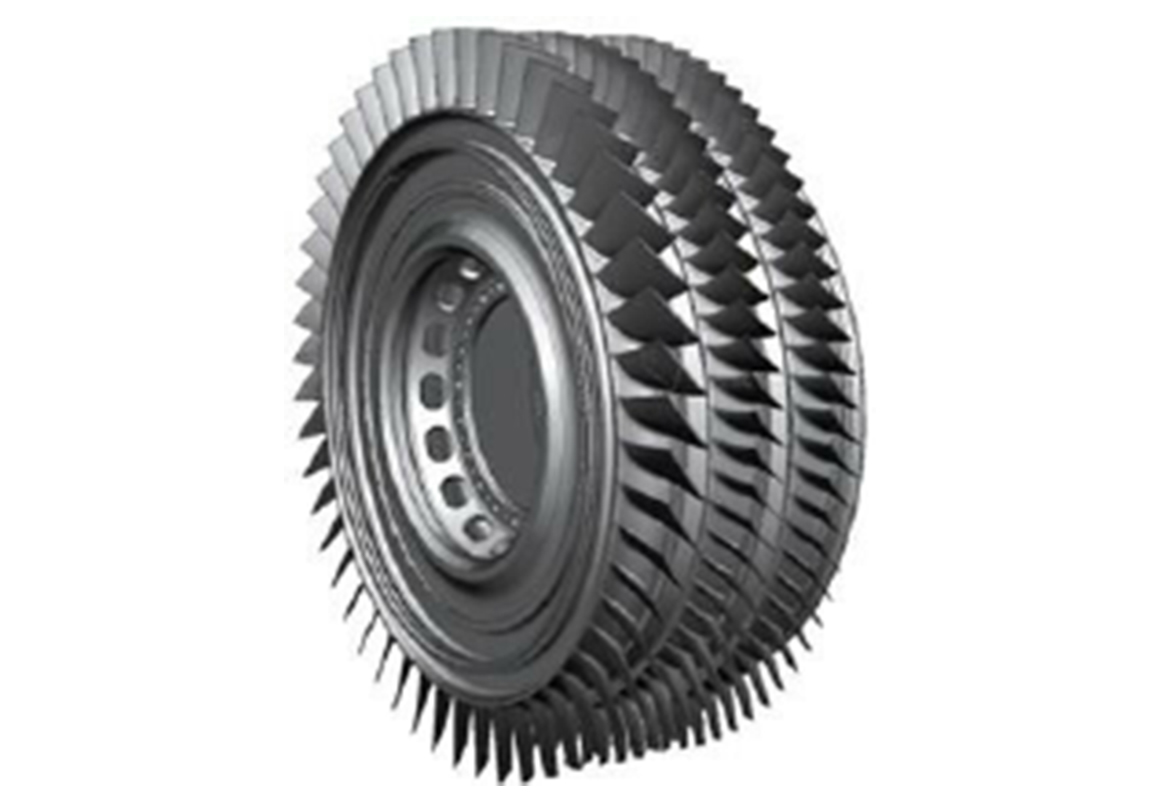
- HOME
- ABOUT US
- PRODUCTS
- SERVICE
- APPLICATIONS
- NEWS
- ABOUT US 2
- PRODUCTS1


SERVICE

当前位置:
Compressed blade repair
发布时间: 2019-09-24 15:36




Aircraft engine compressor blades belong to high-temperature, high-pressure, high-speed rotating parts. The working conditions are relatively harsh. The blade tip part is prone to cavitation. If the amount of wear exceeds a certain amount, it will fail, reduce the compression ratio and shorten its service life . Replacing new blades will greatly increase maintenance costs and bring losses in many aspects. At present, theoretically feasible repair methods include arc welding, plasma welding, and laser powder coating 3D printing. Arc welding and plasma welding not only have a large amount of heat input, but also can not solve the micro undercut phenomenon at the inlet and outlet sides of the blade and cause serious deformation. Laser powder coating 3D printing has low efficiency, high cost and low pass rate for repairing leaf tips.

Cladding effect
Laser powder feeding 3D printing remanufacturing technology is to use a high-power laser beam to focus on the optical element to obtain a very high energy density, which instantly melts the surface of the substrate and simultaneously melts the alloy powder that is preset or automatically sent to the substrate surface in synchronization with the laser beam , To obtain a dense coating combined with the base metallurgy. The bonding strength is generally not lower than 95% of the original matrix material. The substrate material can be micro-melted on the surface during laser processing. The micro-melt layer is 0.05-0.1 mm, and the heat-affected zone of the substrate is extremely small, generally 0.05-0.5 mm. Both the cladding layer and the matrix have no coarse casting structure, the cladding layer and its interface are dense, the grains are fine, there are no defects such as voids and inclusion cracks. During laser processing, the temperature of the substrate does not exceed 80 ° C. The deformation after laser processing is calculated at 0.01mm. After the cladding, the stress is released after heat treatment. The deformation will be calculated at 0.001mm, which is completely negligible.
Because the blade tip thickness changes, the middle thickness is the largest, and greater power is required during cladding. If the laser is cladding at the same power, the thinnest part of the two ends will be melted by this larger power, and it cannot play a repairing role. Therefore, in order to obtain the corresponding cladding width without melting the material at both ends of the blade, variable power cladding is used. Because the two ends of the blade are particularly thin, the thickness at both ends of the 8-stage blade is only 0.2mm. Undercutting is easy to occur during laser cladding, so special treatment is required at both ends to solve the undercutting problem. In low-power cladding, it is necessary to rely on a laser coaxial imaging system for accurate comparison. At present, the rotor blades of the compressor that have been repaired work well.

Cladding effect
Laser powder feeding 3D printing remanufacturing technology is to use a high-power laser beam to focus on the optical element to obtain a very high energy density, which instantly melts the surface of the substrate and simultaneously melts the alloy powder that is preset or automatically sent to the substrate surface in synchronization with the laser beam , To obtain a dense coating combined with the base metallurgy. The bonding strength is generally not lower than 95% of the original matrix material. The substrate material can be micro-melted on the surface during laser processing. The micro-melt layer is 0.05-0.1 mm, and the heat-affected zone of the substrate is extremely small, generally 0.05-0.5 mm. Both the cladding layer and the matrix have no coarse casting structure, the cladding layer and its interface are dense, the grains are fine, there are no defects such as voids and inclusion cracks. During laser processing, the temperature of the substrate does not exceed 80 ° C. The deformation after laser processing is calculated at 0.01mm. After the cladding, the stress is released after heat treatment. The deformation will be calculated at 0.001mm, which is completely negligible.
Because the blade tip thickness changes, the middle thickness is the largest, and greater power is required during cladding. If the laser is cladding at the same power, the thinnest part of the two ends will be melted by this larger power, and it cannot play a repairing role. Therefore, in order to obtain the corresponding cladding width without melting the material at both ends of the blade, variable power cladding is used. Because the two ends of the blade are particularly thin, the thickness at both ends of the 8-stage blade is only 0.2mm. Undercutting is easy to occur during laser cladding, so special treatment is required at both ends to solve the undercutting problem. In low-power cladding, it is necessary to rely on a laser coaxial imaging system for accurate comparison. At present, the rotor blades of the compressor that have been repaired work well.

CONTACT US

HOTLINE
025-86756109

Follow us on Wechat





E-Mail:info@huirui-tech.com

Address:No1 Ruixin Road, Jiangning District, Nanjing, JiangSu, China
地址:南京市江宁区瑞鑫路1号
NANJING HUIRUI PHOTOELECTRIC TECHNOLOGY CO., LTD.
Driving freedom of manufactUring
COPYRIGHT © XX import and Export Trading Co., Ltd. copyright all Guangdong 苏ICP备17032011号
Landline:+86-25-86756108



